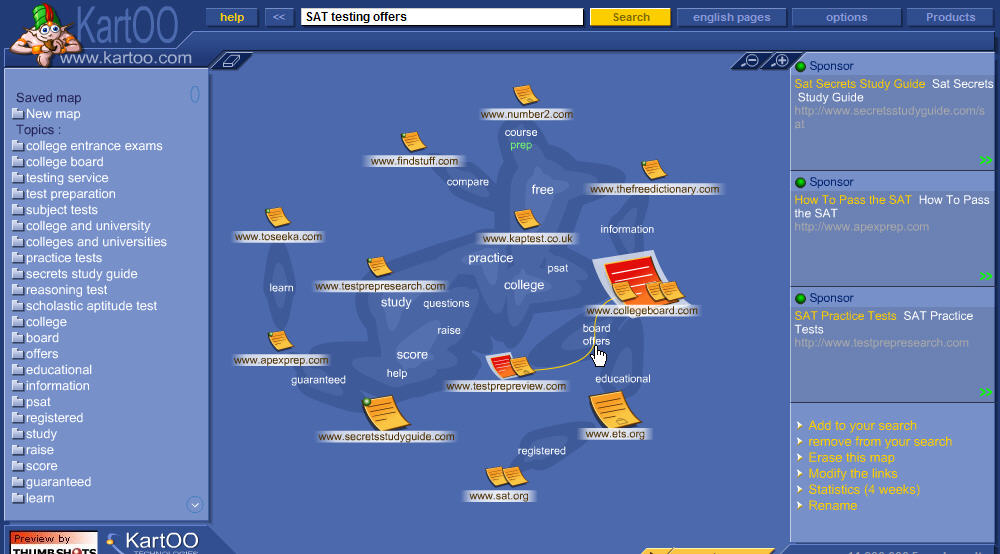Welcome to this week’s edition of Carnival of Marketing. It’s my first time as host, and I’ve sifted through the many submissions to find those that offer actionable news, perspectives and advice. Those that didn’t make the cut? Let’s just say I’ve tried to leave the carnival pitchmen and women out on the midway. So, step into the tent, watch where you step, and let the carnival begin!
Do you want to market to twenty-somethings? Start by reading The Many Lessons of Scion, by ThirdWayBlog. David Vinjamuri is adjunct Professor of Marketing at NYU, and President of ThirdWay, Inc. He offers a dissection of the success of Scion, a car that most people my age think of less as a vehicle than the packing crate it came in. “Scion has excellent lessons for the modern marketer. More than many other brands targeting young adults today, Scion has understood that ubiquity and brand strength are not complementary goals and has been willing to forgo the former to gain the latter. The very brave decision to scale back manufacturing to avoid over-saturating the brand shows both the intelligence of Scion marketers as well as the commitment of Toyota executives to the brand promise.” Read on for other lessons, including one of David’s latest posts, about why Microsoft’s Zune will deservedly get creamed by the iPod. Good stuff.
Ever wondered how social causes get showcased in weekly television programs? Nedra Weinreich reports that “Getting your issue on TV is not as simple as sending a fact sheet to the producer of a show. People who are working in this field have developed relationships over time with writers, researchers, producers and others in the entertainment industry. They are trusted not to push an agenda or a specific plot line, but to provide accurate facts and ideas that writers can then weave into their storytelling.” Read about it in Social Marketing Product Placement, from her Spare Change blog.
Charles H. Green presents Advertising, Borat, Fairy Tales and Trust posted at Trust Matters, saying, “Once upon a time there was a ‘Chinese Wall’ that provided some sort of ethical boundary between marketers/advertisers and media content itself.” This excellent blog lists recent examples of where this wall has been breached, and how this trend has eroded our trust in both the storytellers and their sponsors. This is a new blog to me, and one I will be returning to often.
Here’s one that is already a favorite of mine. Kevin Hillstrom presents Williams Sonoma: Incremental Online Sales and Matchback Analysis posted at The MineThatData Blog. Marketers struggle with how best to allocate sales from one advertising channel to another. Kevin describes two popular methods.
Noah Kagan, founder of this Carnival, wonders WWSGS: What would Seth Godin say? What are the mistakes of this ad? Guess what they are, and then, buried in the comments, you’ll find what errors Noah found.
This carnival has several entries about blogging. Personally, I try not to write about the subject myself, on the grounds that my readers are mostly non-bloggers who want information without pondering how the content is delivered. Ironically, Jim Cronin’s is the best of the blog-related entries this week, with his Who Are You Blogging For? In it he offers that most fundamental marketing advice, Know your audience. It’s advice worth repeating.
Barry Welford has an interesting and carefully reasoned blog on mobile computing called StayGoLinks. In it he writes that the theme for XTech 2007 Conference, to be held in Paris in May, is The Ubiquitous Web. That is also the title of his blog entry. He explains, “The Ubiquitous Web describes efforts to ensure that all can be in touch and stay in contact with the Internet whatever device they are using, whether it be cell phone or desktop PC.” The problem in his view is there are no common standards, and his blog proposes a temporary solution, the Multi-web Practice.
Benjamin Yoskovitz has gotten several PR groups approaching him recently about endorsing books, and other products and services, in the pages of his Instigator Blog. That caused him to post this advice to bloggers: When Your Blog Gets Pitched, Pitch Back. He stresses there that, “It’s absolutely essential that you maintain the integrity of your blog and keep separate what you do for money and what you do voluntarily.”
A neighbor of mine to the south, whose name is simply Praveen, reports in his Branded Interactive Features Coming to DVDs about the use of new DVD formats to carry branded interactive games and calculators. This prolific Chicago blogger cites how Progressive Direct, the auto insurance company, has teamed up with Universal to create a “crash calculator” for the HD DVD version of “The Fast and the Furious: Tokyo Drift.” Although Praveen contributes to more blogs than I have clean shirts, he chose to post this particular news at his My Simple Trading System. Thank you, Praveen. Your many blogs are interesting and full of helpful content.
Pushpa Sathish writes that it is, “Simple logic that the person who uses the product the most [is] the best to offer suggestions for its improvement.” Is this the case with major CRM systems? CRM Lowdown: Collaborating with Your Customer to Drive Innovation posted at CRM Lowdown, explores this question.
Finally, Mister Juggles, making his parents the Juggleses proud, presents How successful has Domino’s been in bringing pooplets to market? posted at Long or Short Capital. In what may be an attempt to drive down Domino’s Pizza’s stock price, Mr. J. suggests that the pizza delivery chain is selling something that even the makers of Soylent Green would find unappetizing, “To the Drunk/Stoned market, which is known to be both price and taste insensitive.” They also laugh at anything.
That concludes this edition. I’m doing next week as well. Submit your blog article to the next edition of Carnival of Marketing using this submission form. Past posts and future hosts, can be found on the blog carnival index page.


